Sensory Integration
A Guide for Preschool Teachers
Christy Isbell and Rebecca Isbell
Dedication
This book is dedicated to our family. Their love and support has made this book and many other projects in our lives possible. Thank you.
Christy and Rebecca
Acknowledgments
Special thanks to the preschool teachers of the East Tennessee State University Child Study Center and Little Buccaneers Student Childcare Center for their willingness to allow us to visit their classrooms and take photographs for this book.
Disclaimer
While this book concerns children with sensory integration disorders, the photographs used in the book do not necessarily include children with the specified disorder.
Special Thanks
We would like to thank some very special people who have worked diligently on the development of this book. Sheila P. Smith was the final person in the office to put her finishing touches on the words and organization of the content. Her questions and careful editing have made her an essential person on this project. Michael O. Talley has contributed the many fabulous photographs that are used in our book. These visuals will help you see what is being described in the text. Roxanne K. Stanley has been invaluable for the work she has done related to the many details that must be completed, including research, reviewing photographs, and photo releases. Rhonda Harper, OTR/L reviewed the text and provided us with guidance on terminology that would be useful for preschool teachers. Our thanks are given to these four highly competent individuals.

Bulk purchase
Gryphon House books are available for special premiums and sales promotions as well as for fund-raising use. Special editions or book excerpts also can be created to specification. For details, contact the Director of Marketing at Gryphon House.
Disclaimer
Gryphon House, Inc. and the authors cannot be held responsible for damage, mishap, or injury incurred during the use of or because of activities in this book. Appropriate and reasonable caution and adult supervision of children involved in activities and corresponding to the age and capability of each child involved, is recommended at all times. Do not leave children unattended at any time. Observe safety and caution at all times.
Sensory Integration: A Practical Guide for Preschool Teachers
2007 Christy Isbell and Rebecca Isbell
Photographs by Michael Talley
Published by Gryphon House, Inc.
PO Box 207, Beltsville, MD 20704
800.638.0928; 301.595.9500; 301.595.0051 (fax)
Visit us on the web at www.ghbooks.com
All rights reserved. No part of this publication may be reproduced, stored in a retrieval system, or transmitted in any form or by any means, electronic, mechanical, photocopying, recording or otherwise, without the prior written permission of the publisher. Printed in the United States of America. Every effort has been made to locate copyright and permission information.
Cover Art: Straight Shots Product Photography, Ellicott City, MD; www.get-it-shot.com.
Library of Congress Cataloging-in-Publication
Isbell, Christy.
Sensory integration : a practical guide for preschool teachers / Christy Isbell and Rebecca Isbell ; photographs by Michael Talley
p. cm.
Includes bibliographical references and index.
ISBN: 978-0-87659-060-7
1. Children with disabilities--Education (Preschool) 2. Sensory disorders
in children. I. Isbell, Rebecca T. II. Title.
LC4019.2.I82 2007
371.9'0472--dc22
2007000885
Table of Contents
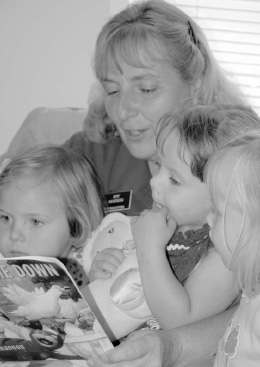
Sensory integration is the neurological process of organizing sensory inputs for function in daily life.
Some children in your classroom may respond to their environment in ways that seem confusing or worrisome, and you may not be sure how to handle their behavior. Some unusual behaviors may be similar to these:
 Thomas covers his ears when the children are singing.
Thomas covers his ears when the children are singing.
 Temple rolls all over the floor while others are sitting in circle time.
Temple rolls all over the floor while others are sitting in circle time.
 Brianna refuses to touch playdough, sand, or paint.
Brianna refuses to touch playdough, sand, or paint.
 Miguel climbs on top of tables and jumps off.
Miguel climbs on top of tables and jumps off.
 Cassandra often falls down and skins her knees.
Cassandra often falls down and skins her knees.
 William refuses to play on outdoor playground equipment.
William refuses to play on outdoor playground equipment.
All of these children are demonstrating signs of problems with sensory integration (SI). So, how can you design or change your environment so that these children can learn and function effectively in the classroom?
This book explains why children with sensory integration problems behave differently in the preschool environment. Red flags in each chapter help identify children who have difficulties with sensory processing, also known as Sensory Processing Disorder (SPD), and simple, easy-to-use solutions are provided to address the sensory needs of young children in preschool. Many of the ideas offered will improve the environment for all children, not just those who have sensory processing problems.
Sensory integration is the neurological process of organizing sensory inputs for function in daily life. Our brains take in information from the body and interpret that information so that we can survive and make sense of our world. We use our senses to learn and develop. We also use our senses to help us interact appropriately within the environment.
We learn early about the five senses of touch, sight, hearing, taste, and smell. However, most of us are not aware of two additional senses that are just as important. Our sense of movement and balance (vestibular sense) interprets information through our inner ears to determine if our bodies are moving or standing still. Our vestibular sense tells our brains that our bodies are moving through space even while we are riding a rollercoaster through a completely dark indoor area where our vision cannot provide information. Our sense of body position (proprioceptive sense) provides our brains with information about our body parts and where they are in space. Proprioceptive awareness helps us determine where our heads, arms, and legs are located at any time, allowing us to walk up stairs without looking down at our feet.
Next page

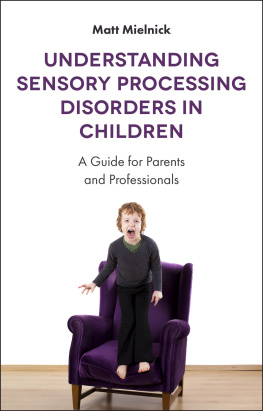
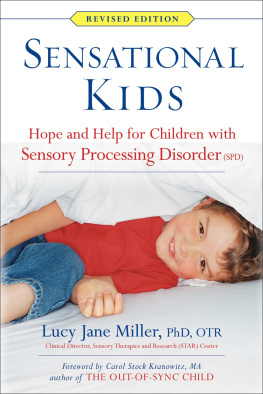
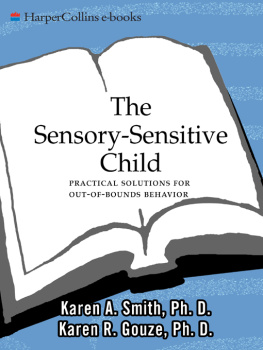

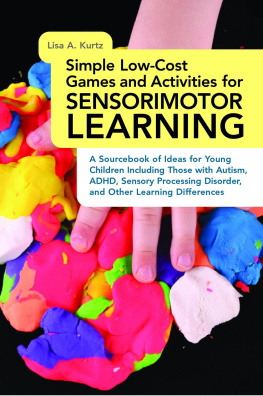
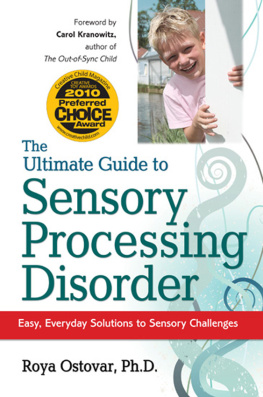
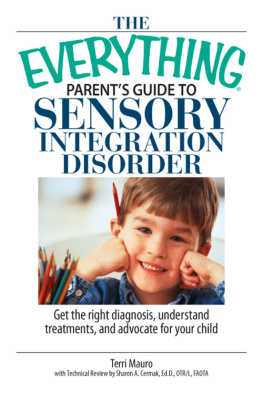
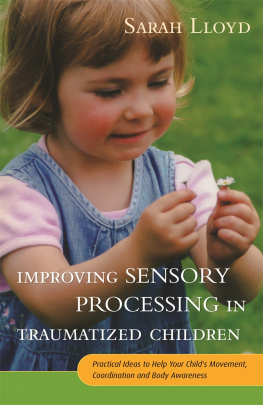




 Thomas covers his ears when the children are singing.
Thomas covers his ears when the children are singing.